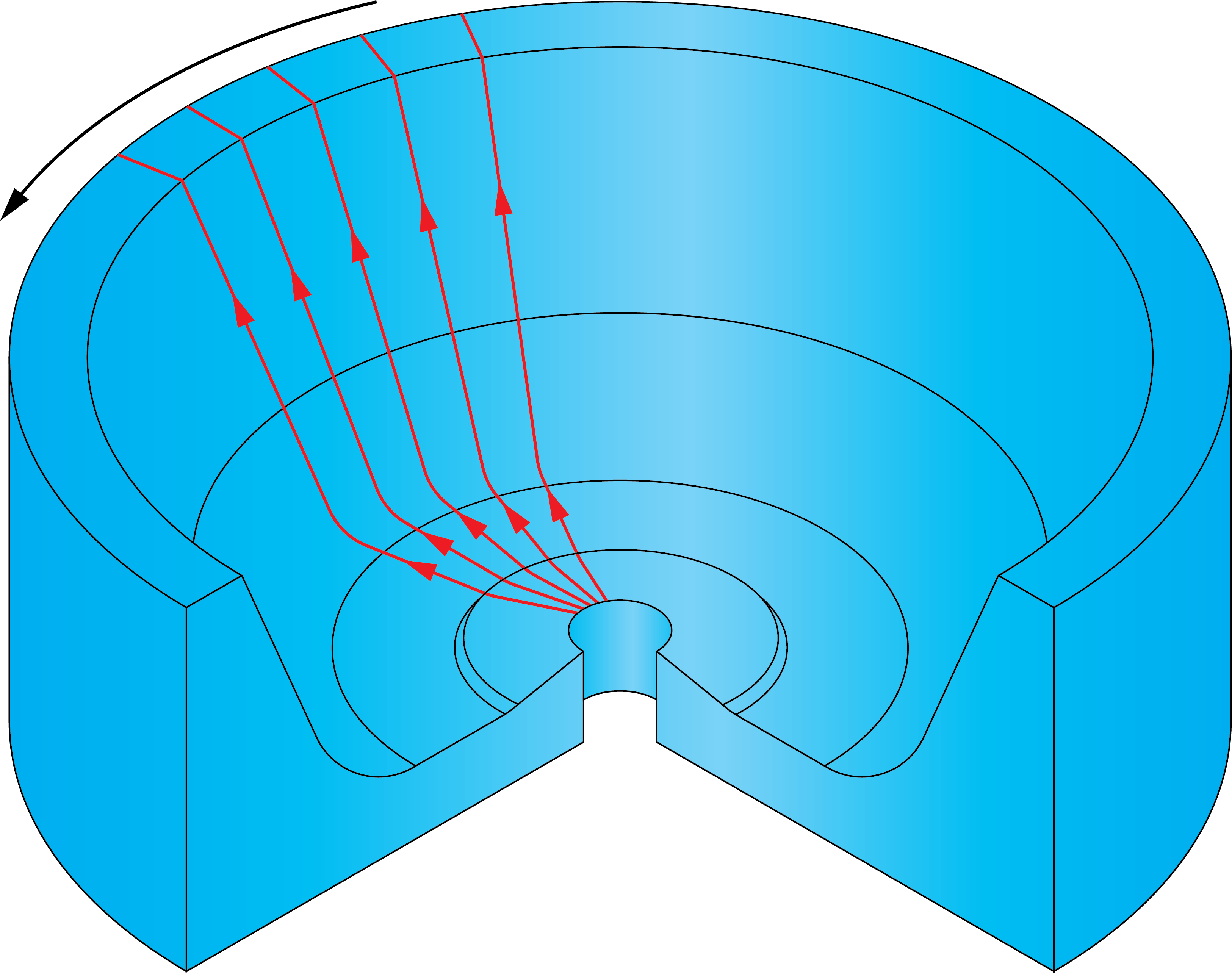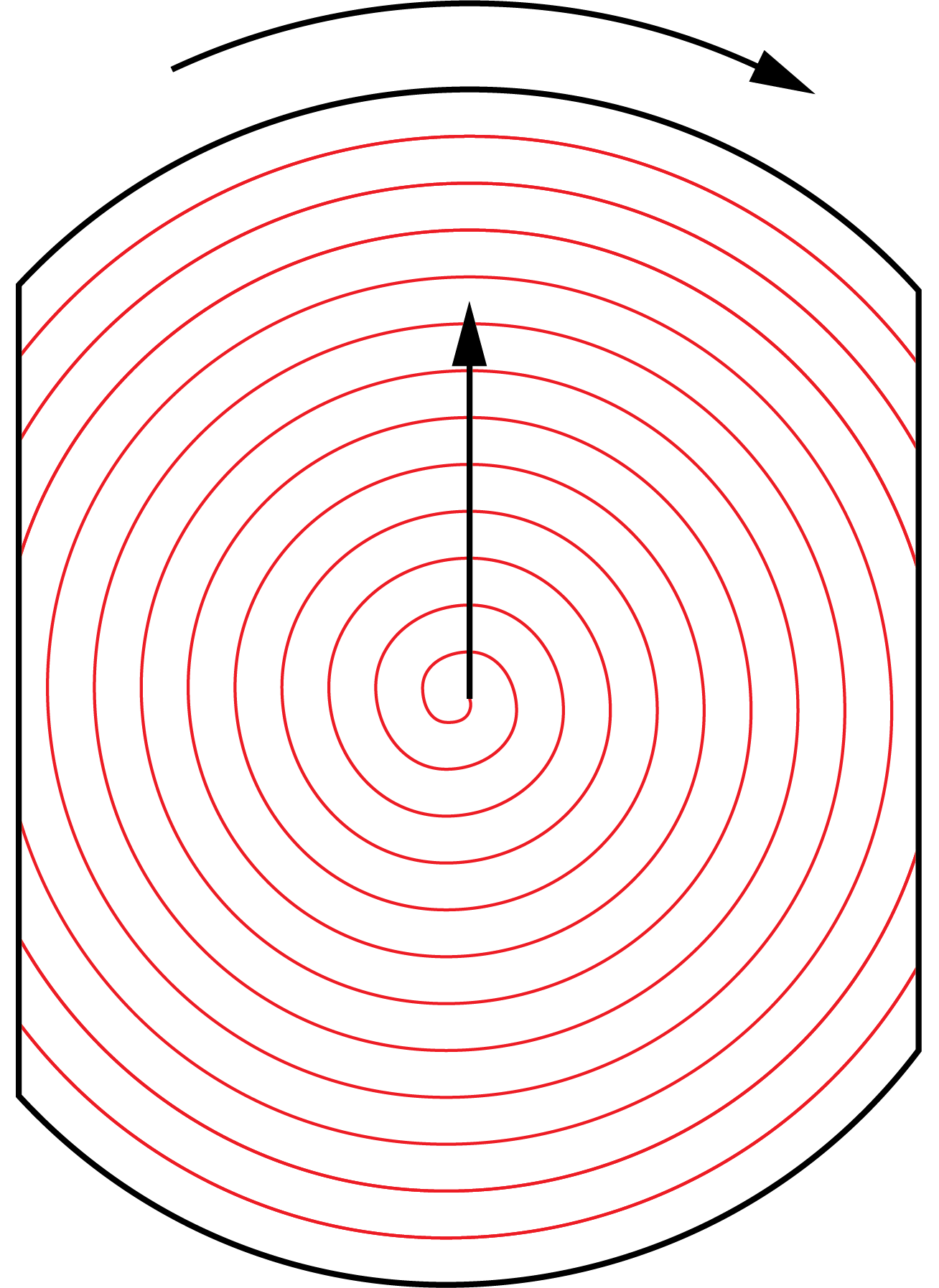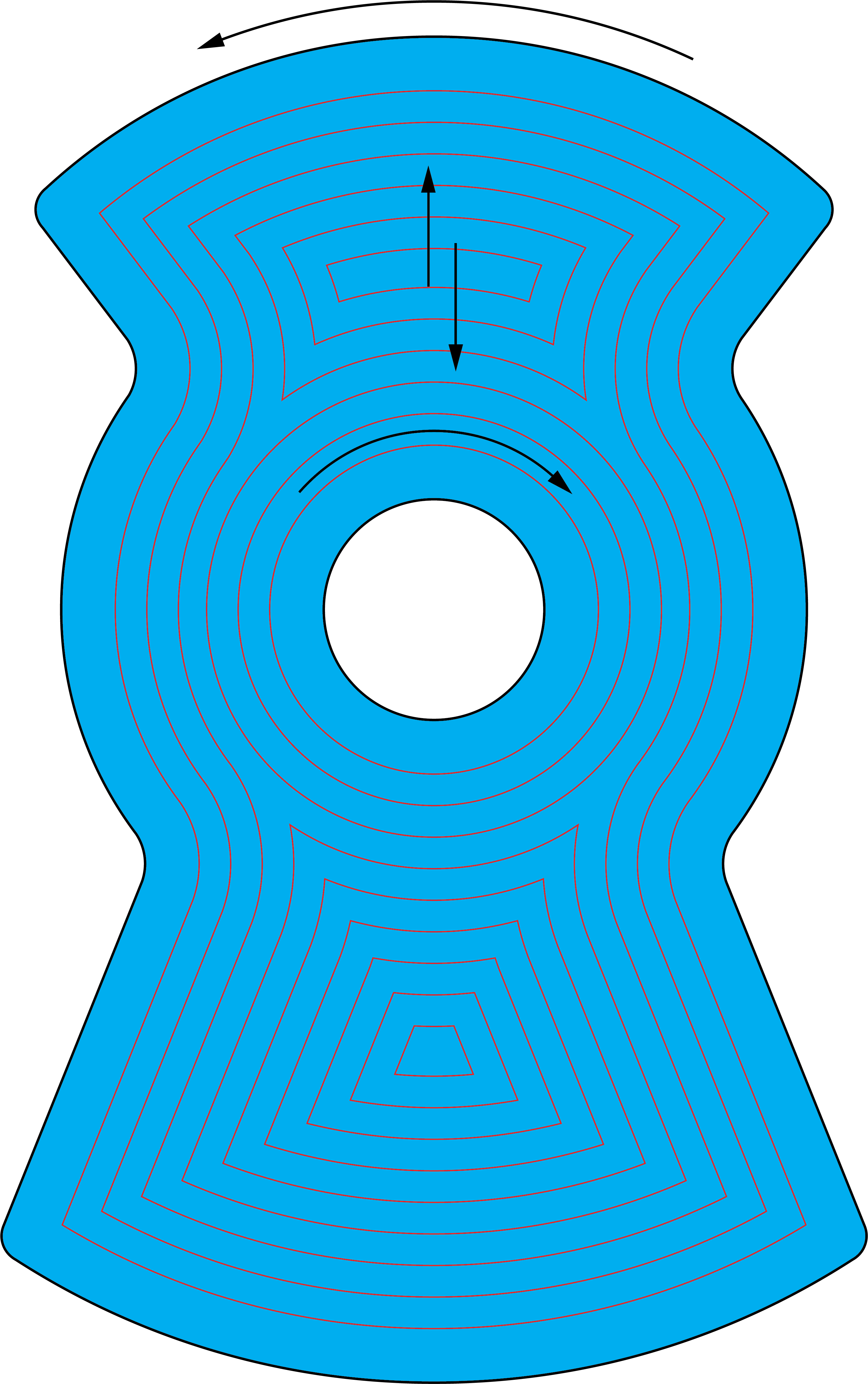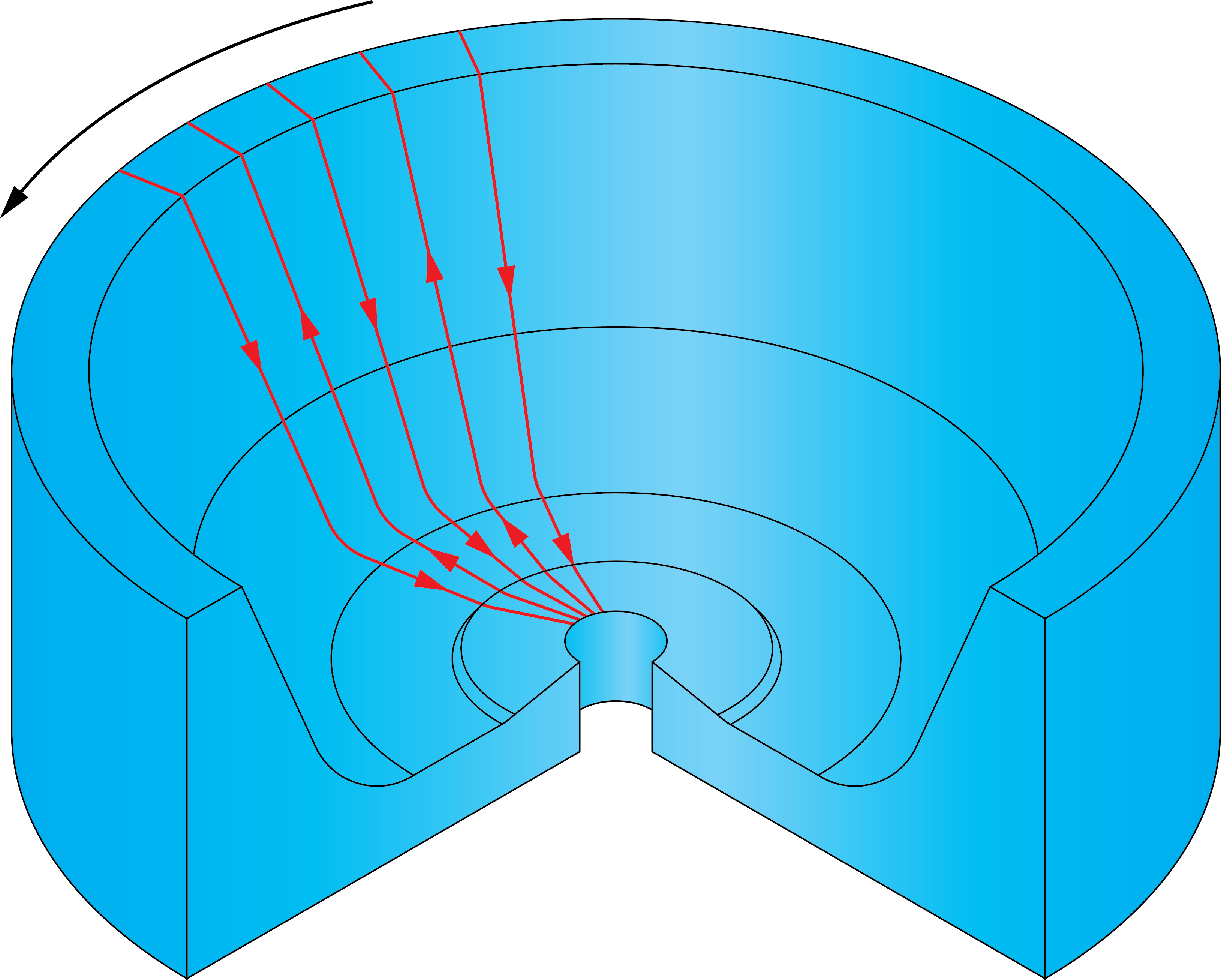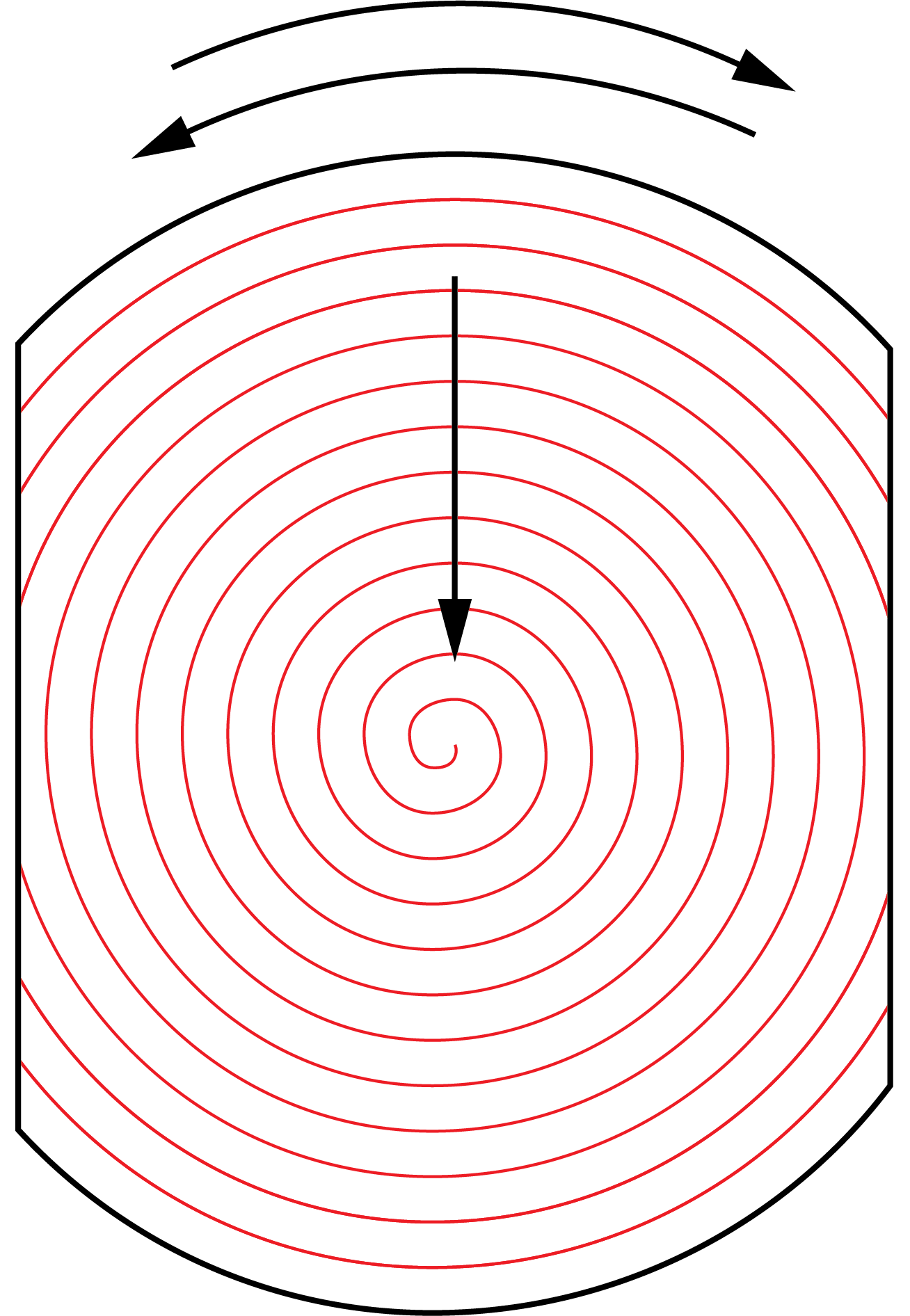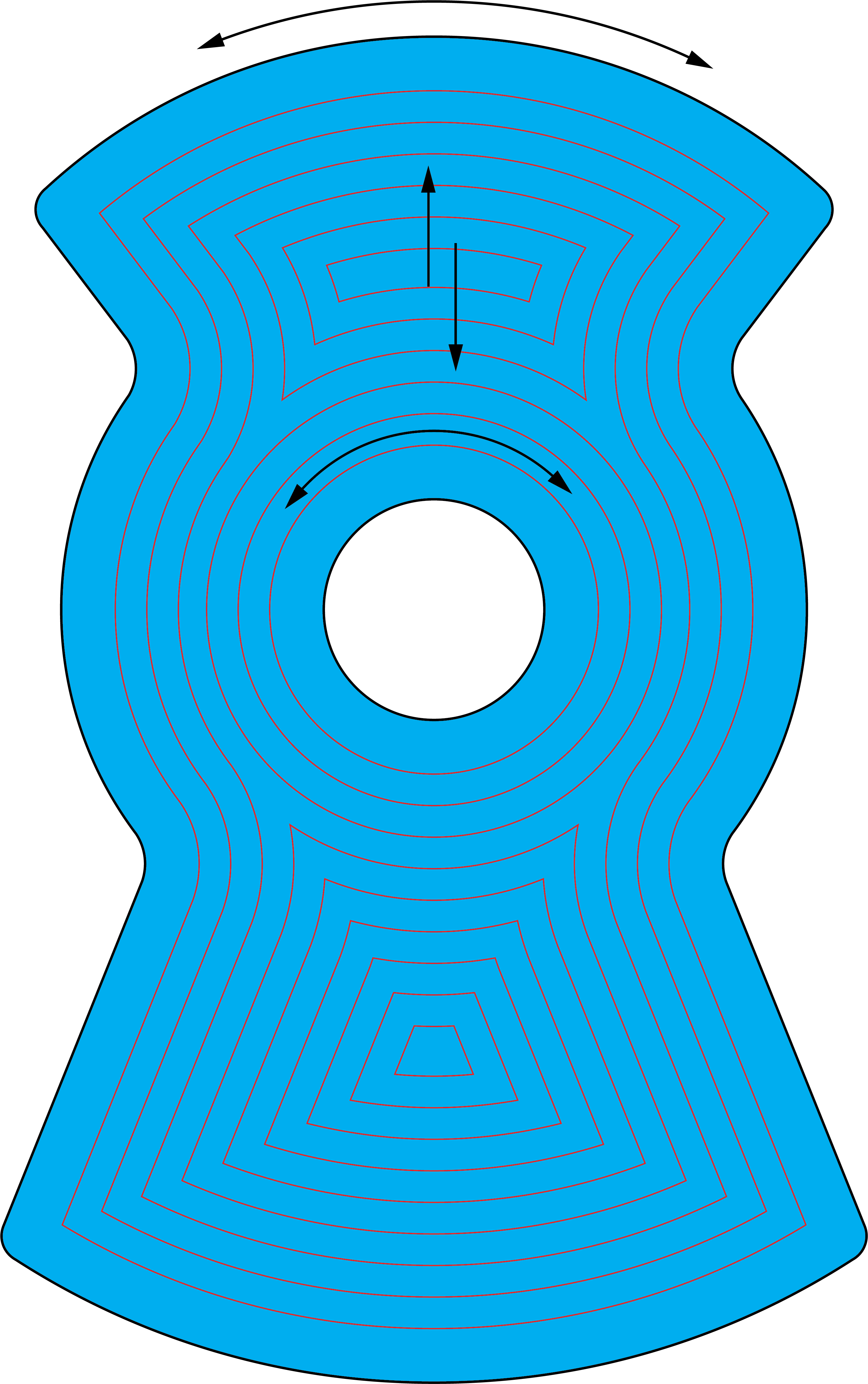Direction options
This parameters group enables you to define the direction of the machining.
One Way
With this option, machining is performed in one direction, but there is no guarantee that this will be consistently climb or conventional milling. It is up to you to check the tool path and respond by selecting the Reverse check box, if needed, for the desired milling style.
A one way hatch path has many retractions; after the machining pass the tool has to perform air movement to the start point of the next pass (shown in red).
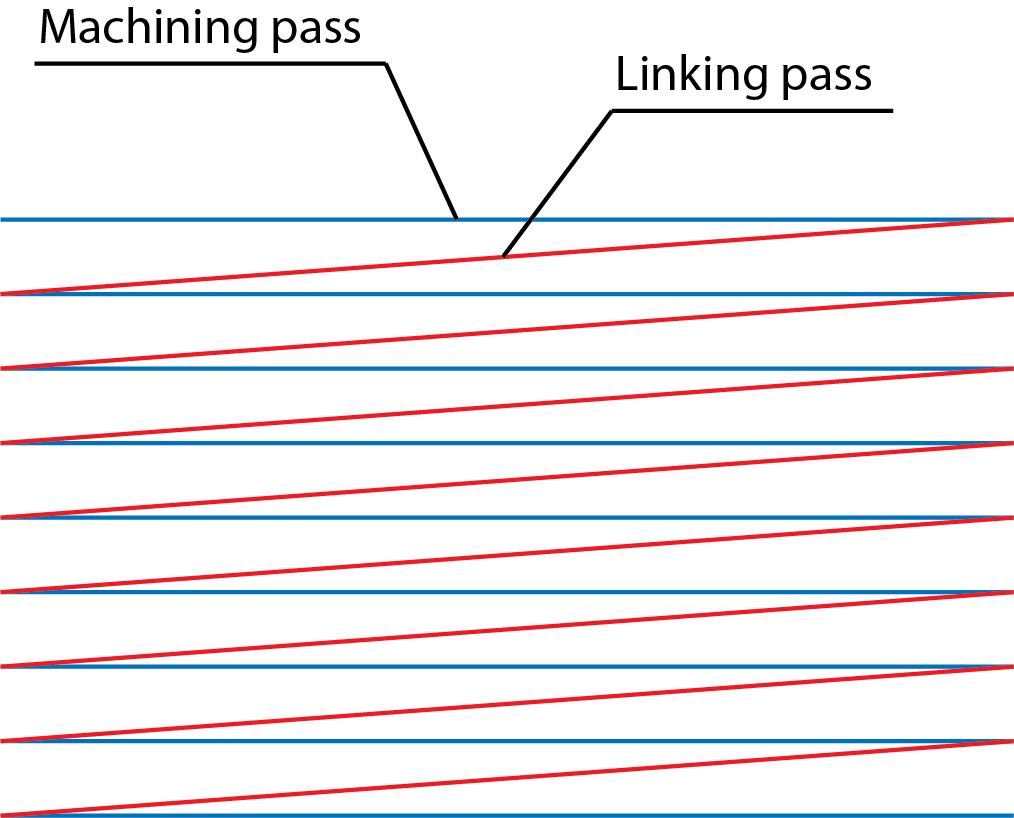
|
|
|
One way cutting with Radial Machining strategy. The radial arrows indicate the direction of the passes themselves while the circular arrow indicates the ordering of the passes. |
One way cutting with Spiral machining strategy. The spiral pass is limited by a boundary. The circular arrow indicates the direction of the passes themselves while the radial arrow indicates the ordering of the passes. Passes are machined in the clockwise direction, moving outwards. |
One way cutting with 3D Constant Step over strategy. The passes are limited by a boundary, with another boundary inside it. The passes are ordered in a one way direction to perform climb milling. The inner circular arrow indicates the direction for the passes adjacent to the inner boundaries. The outer circular arrow indicates the direction for outer boundaries. In this example, most machining passes are performed in the counterclockwise direction, working from the farthest offsets outwards to the outer boundary, then rapidly moving to machine the farthest offset of the inner boundary and working inwards towards the inner boundary. |
Reverse
The Reverse option results in the direction of passes being reversed.
The example below shows one-way radial passes with the reversed direction; the passes will be climb milled.
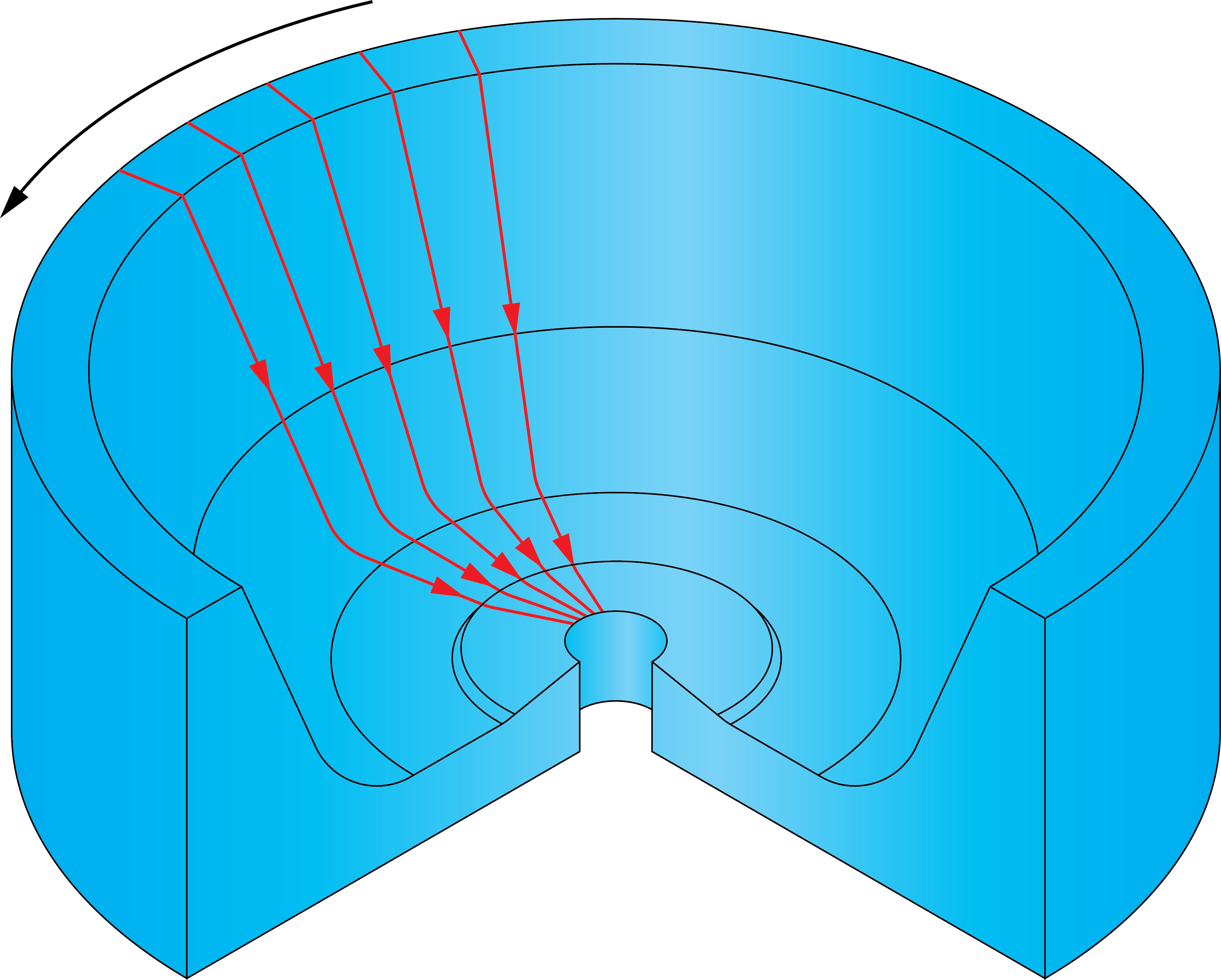
The example below shows a reversed one way spiral passes.
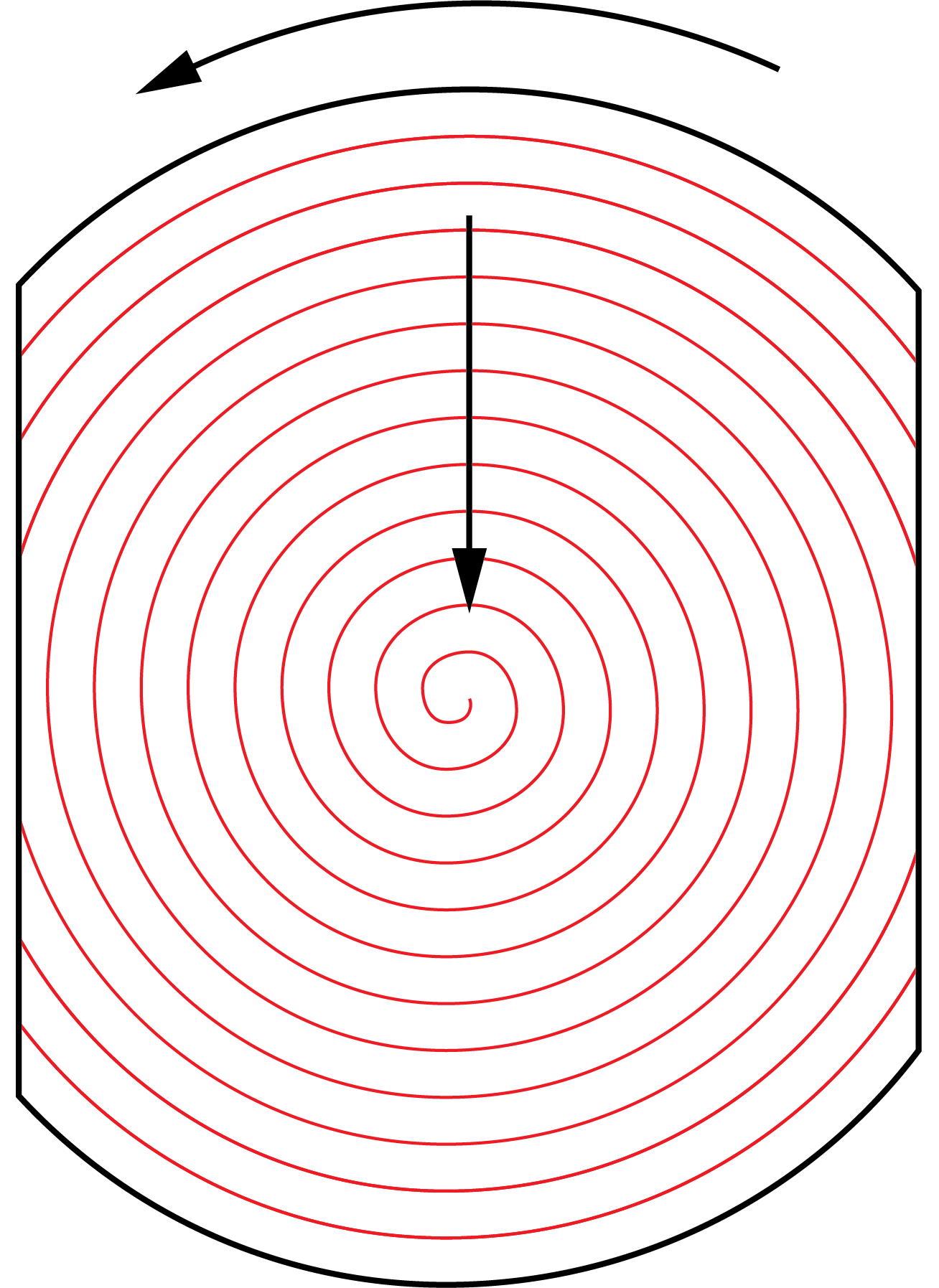
Bi-directional
With this option, each pass is machined in the opposite direction to the previous pass. A short linking motion (shown in green) connects the two ends - this is often called zigzag machining.
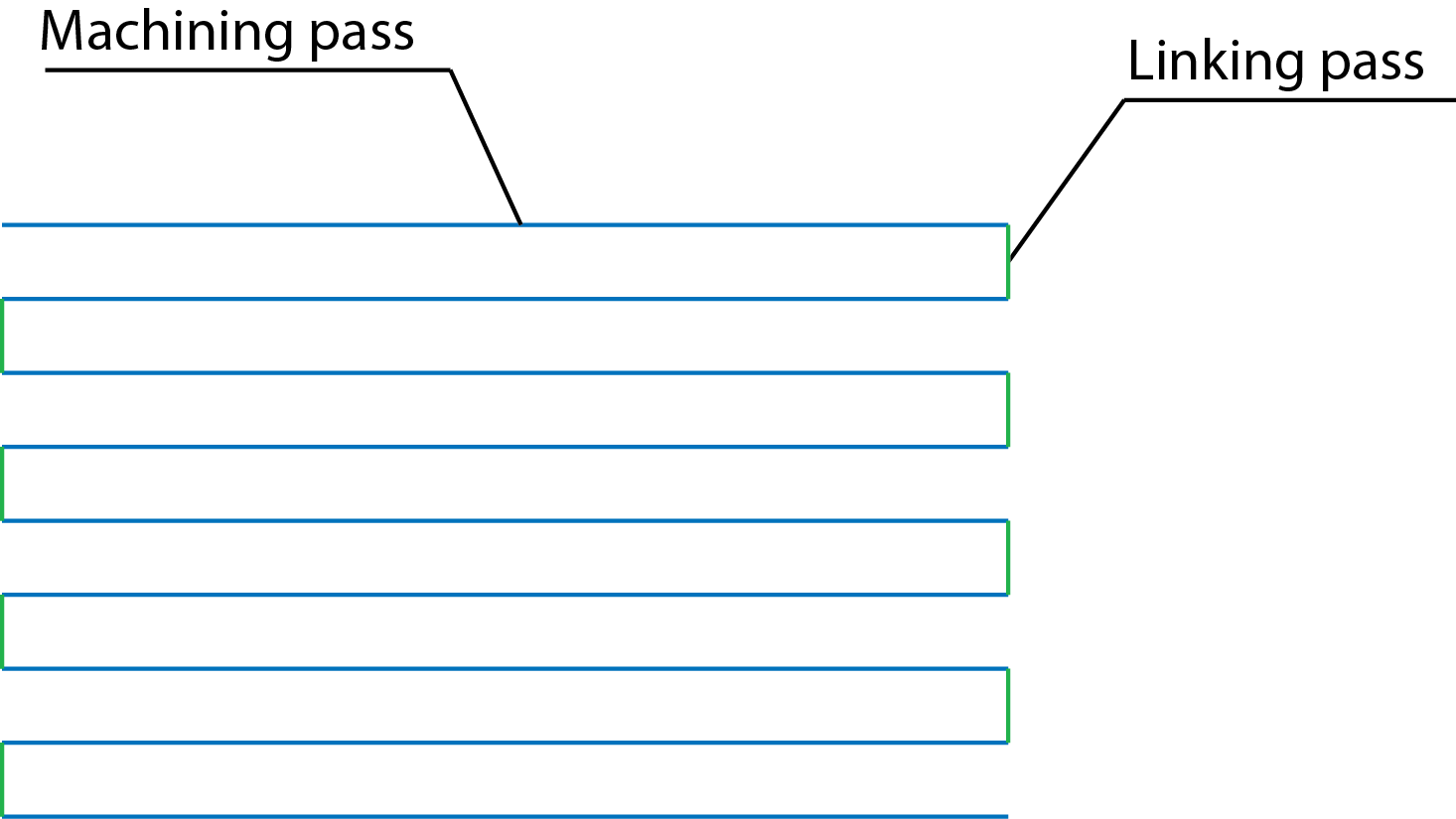
Both Climb milling and Conventional milling methods are used in the bi-directional tool path.
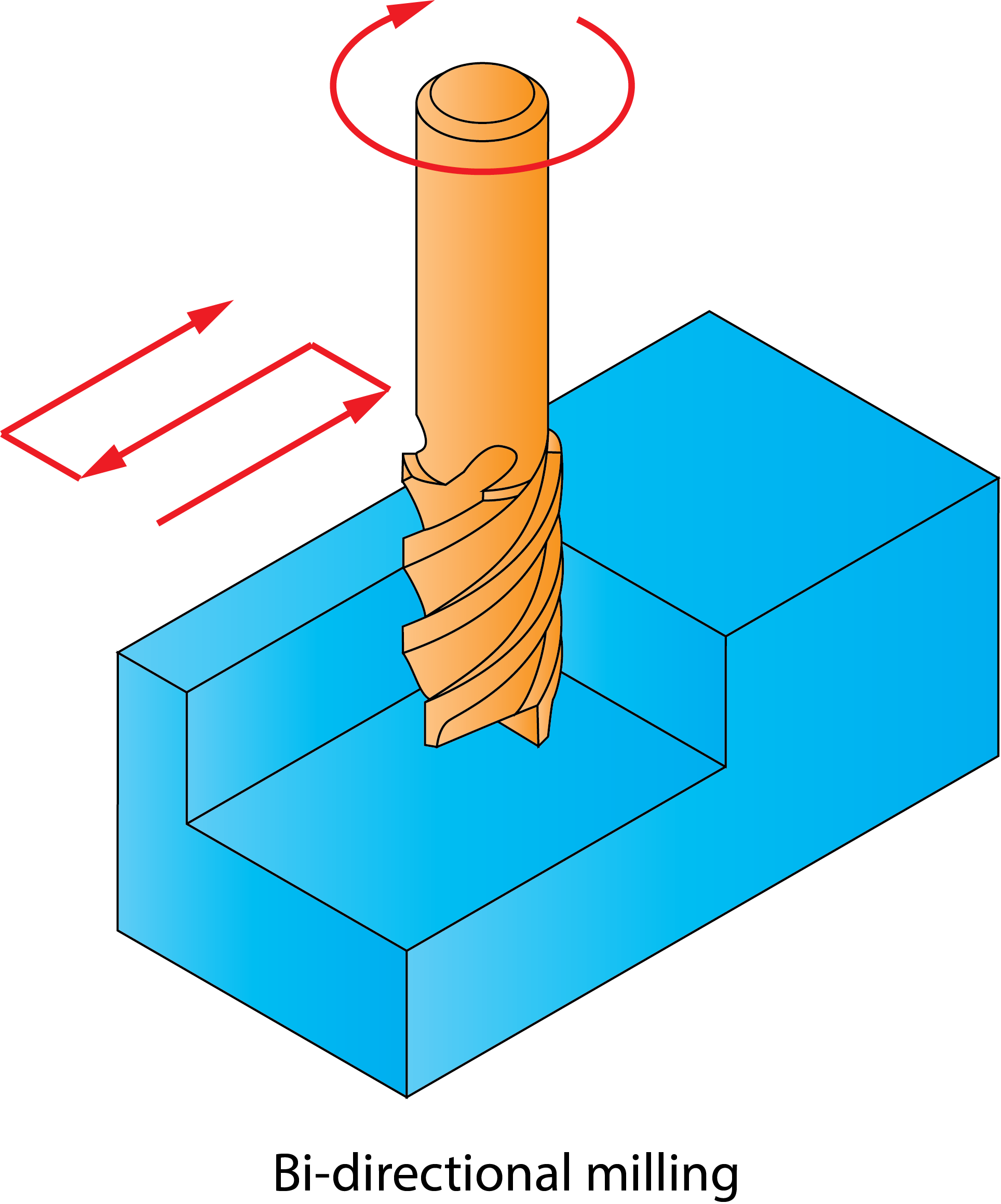
|
|
|
Bi-directional Radial machining.
|
Bi-directional Spiral machining. |
Bi-directional 3D Constant Step over machining. |
Down Mill/Up Mill
These options enables you to perform the machining downwards or upwards. Flat pieces are machined in the direction defined by the Reverse parameter.
|
This option is available for strategies where the z-level varies along a pass. This option is not available for the Constant Z and Horizontal strategies. |
The Down/Up Mill page enables you to define the parameters of the down and up milling.
Down Mill direction
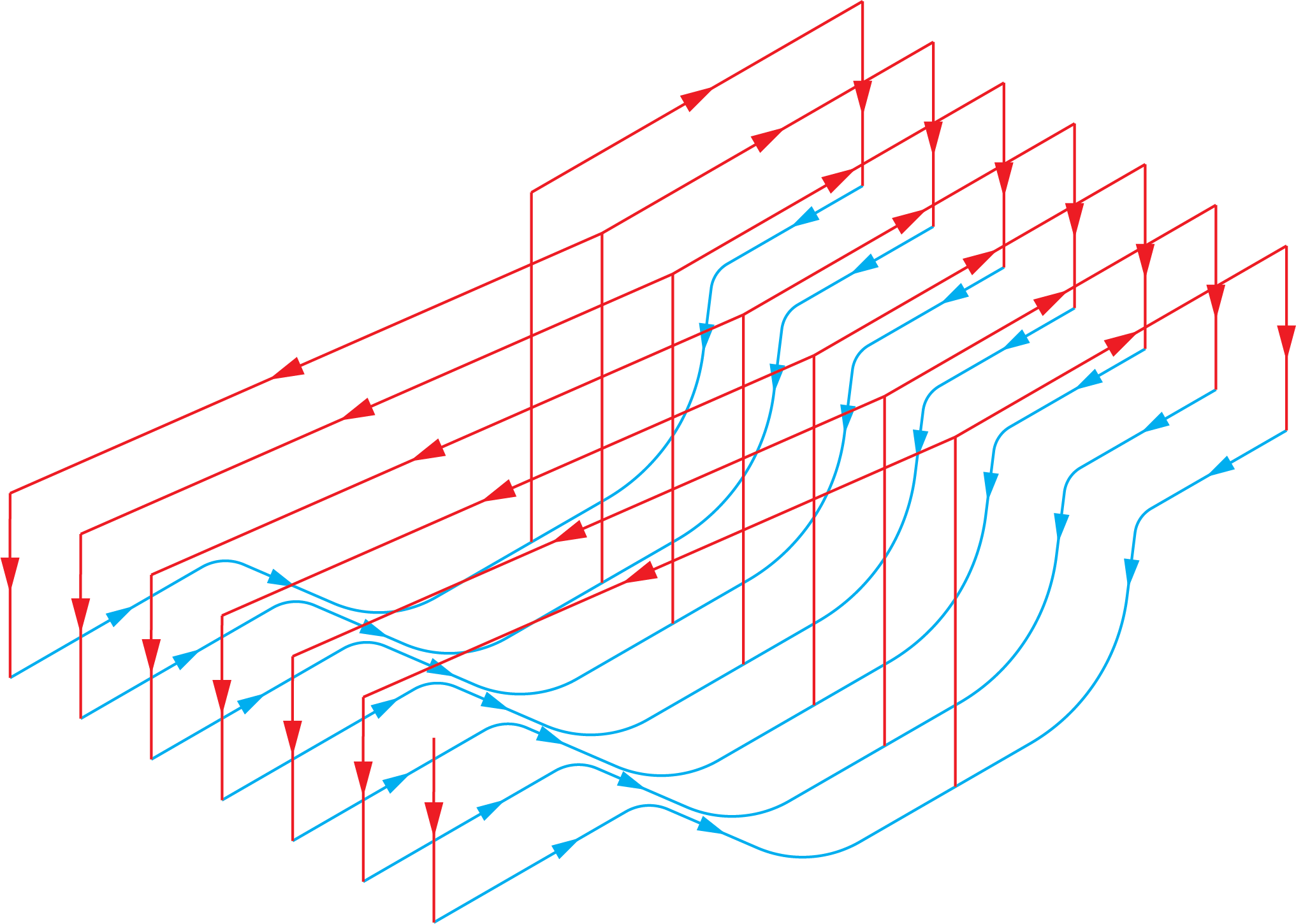
Up Mill direction
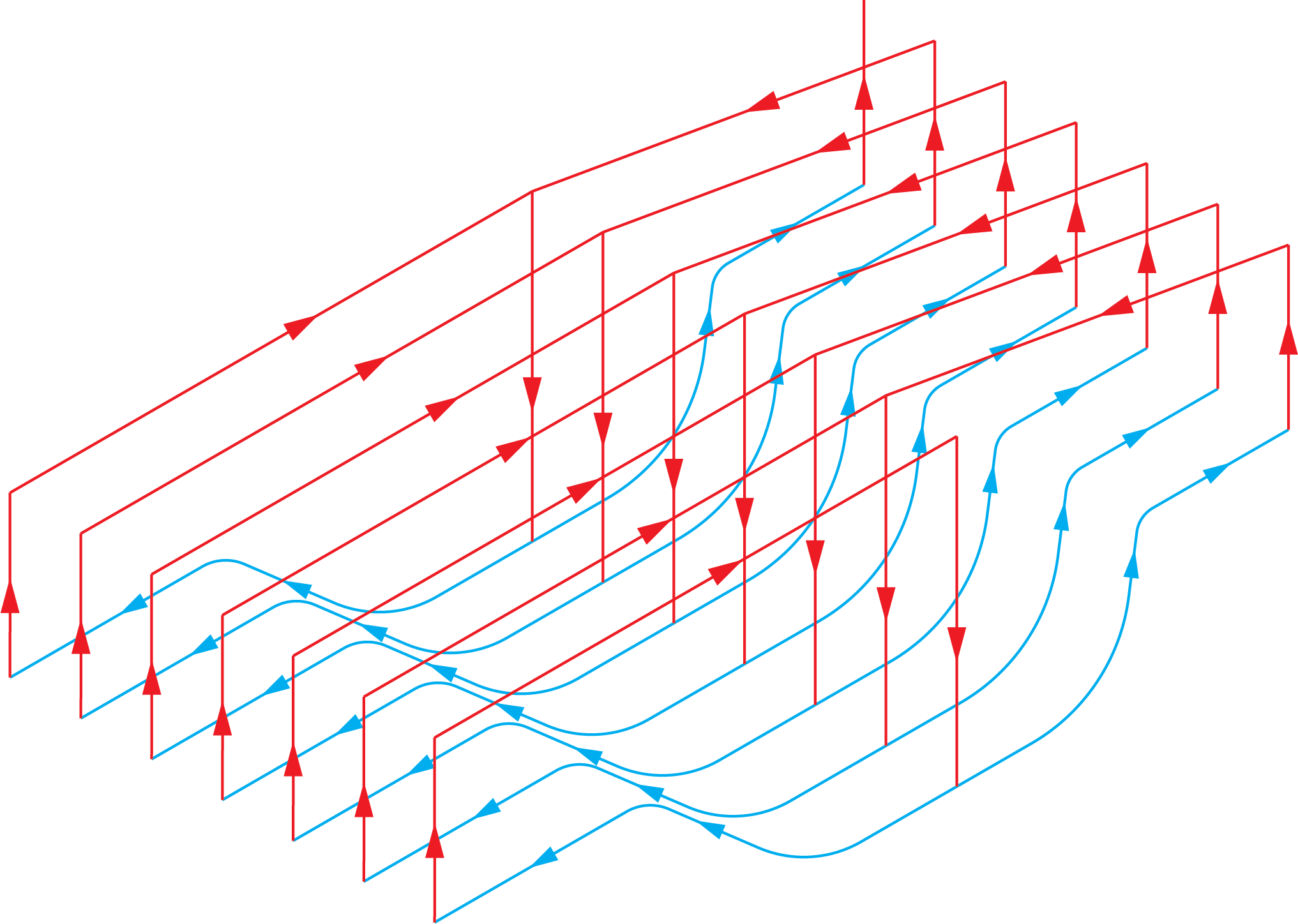
The image below shows the direction of the Radial Machining passes when the Down/Up Mill options are used.
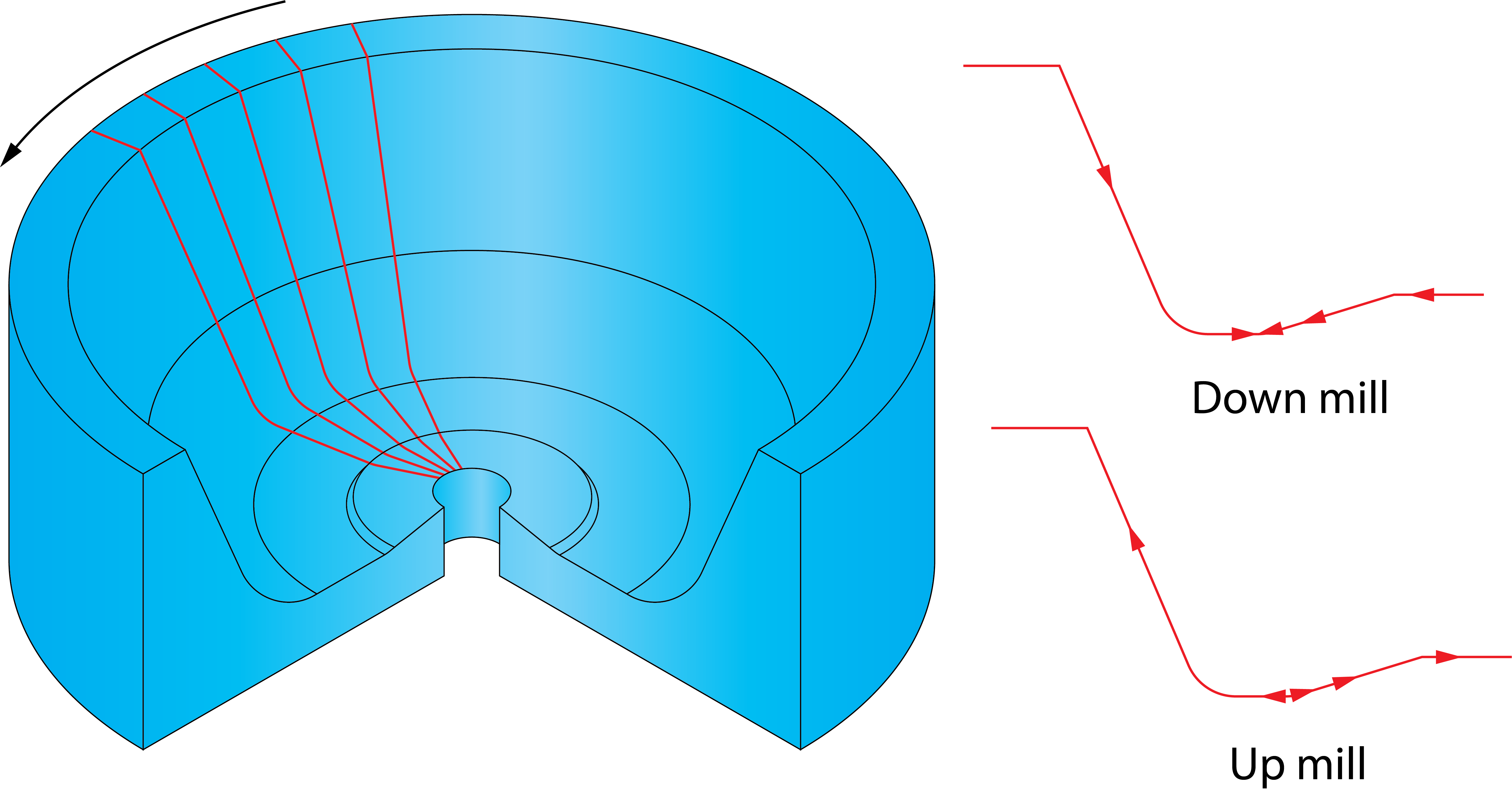
Climb/Conventional Milling
These options enables you to set the tool path direction in such a manner that the climb/conventional milling will be performed.
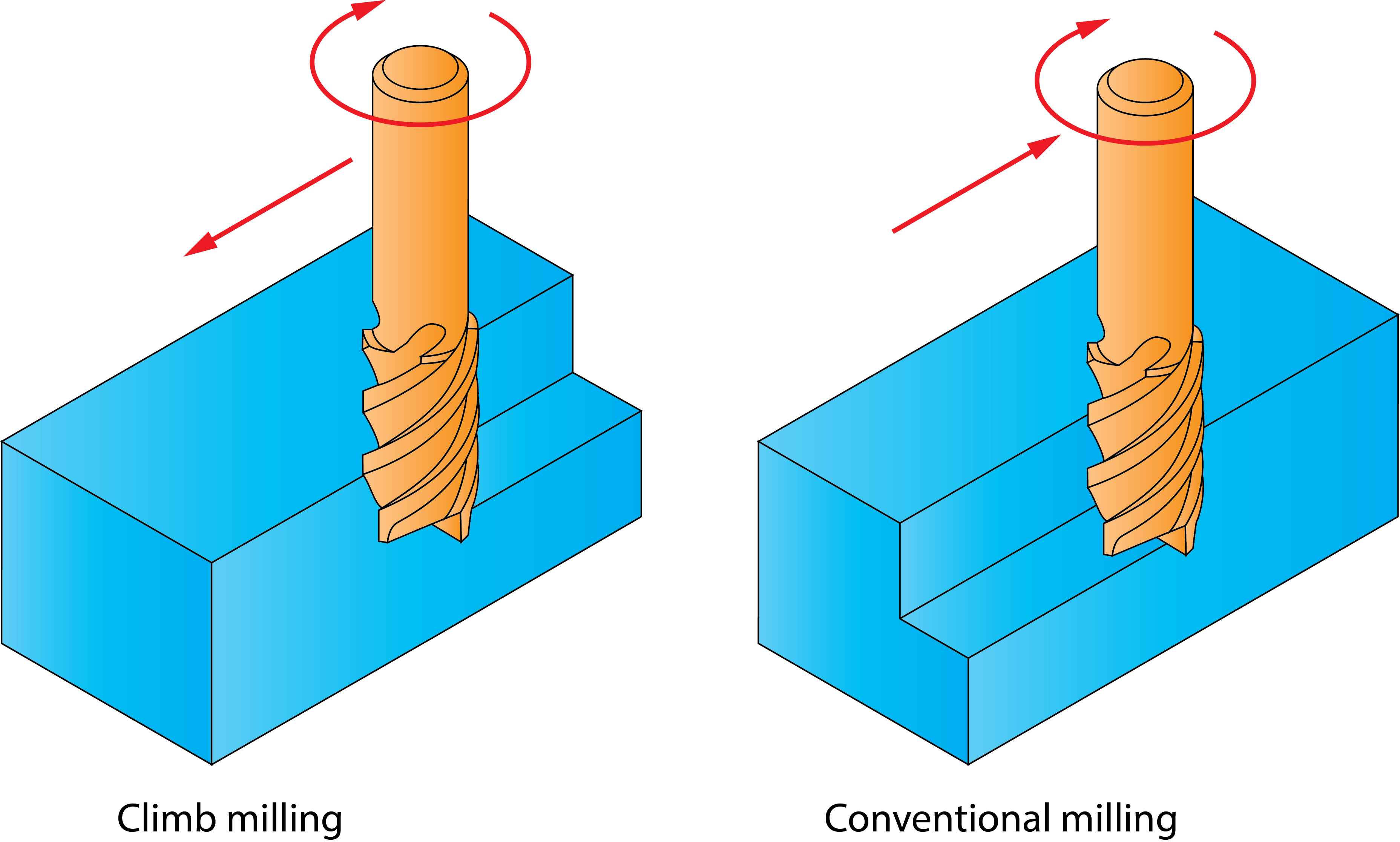
|
These options are available for the Contour Roughing, Constant Z and Horizontal strategies. |
Prefer climb milling
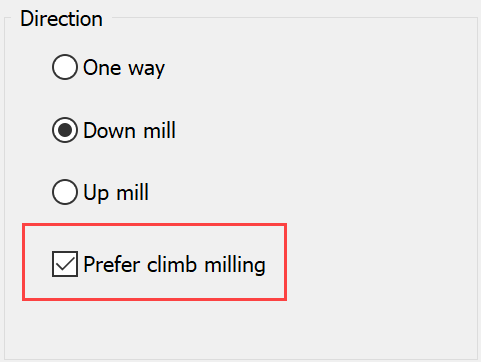
|
This option is available for the Pencil Milling strategy. |
If this option is selected, the Pencil Milling passes will usually be climb milled. A decision is made as to whether the material is mainly on the left or the right of the tool as it goes along a pass. The direction is then chosen so that most material is on the right.
When this option is not selected, the milling direction for all the passes is reversed, so that they will probably be conventionally milled.
Related Topics
